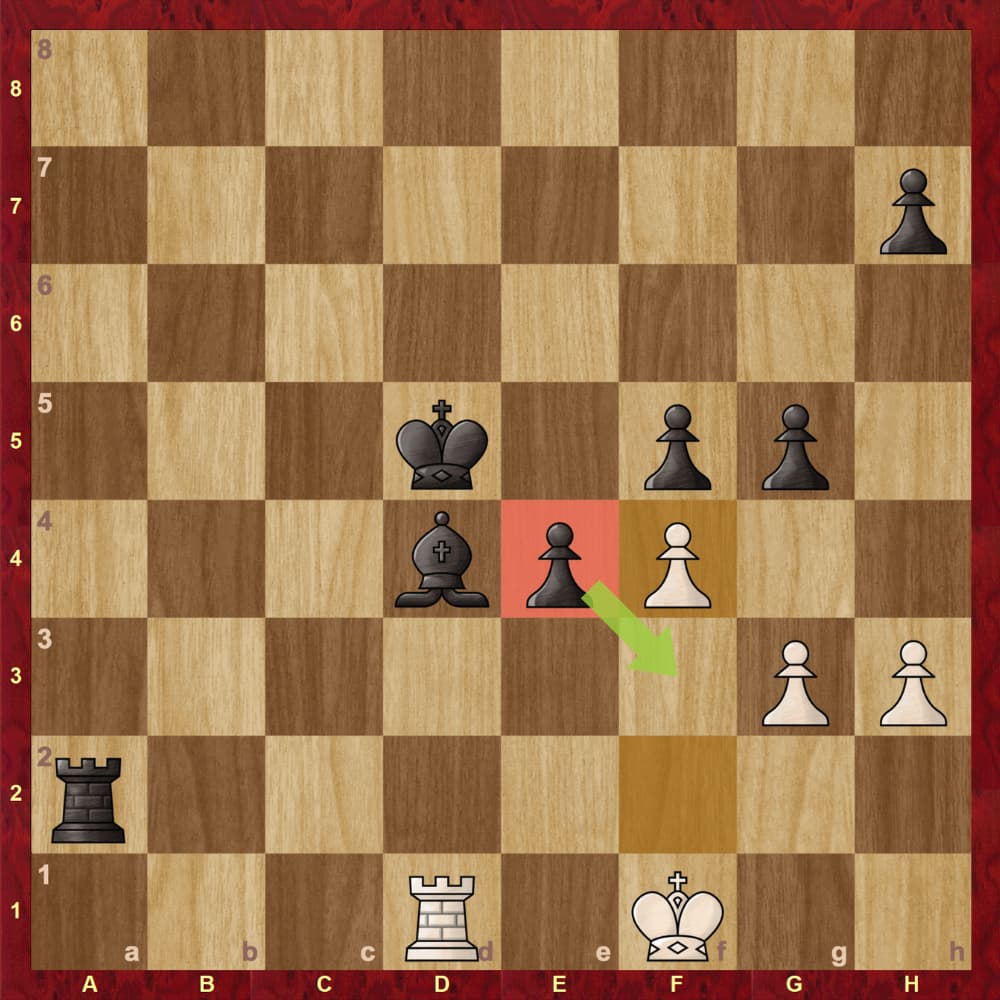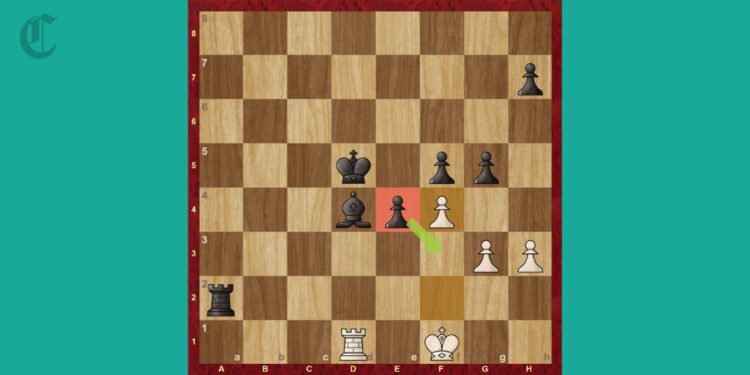
The first time I saw it, which was against a 1500 rated computer on Chess.com. I thought my computer glitched and ignored it. It wasn’t until I saw it again that I looked it up. This page is all about the En Passant, one of the special moves in Chess.
What is En Passant?
En Passant is a special move in Chess that allows a pawn to capture another pawn that has moved forward two squares on that pawns first move and lands one square next to an enemy pawn.
If this occurs, the player is able to capture that pawn with your pawn via En Passant on the next move and only the next move. The pawn captures the pawn by moving one square forward diagonally above the pawn, capturing the pawn. So it’s the only move in the entire game of Chess where a piece is captured by not landing directly on the square of the piece being captured. See the example below.
Examples
Example #1
Click through this PGN below to see a demonstration of En Passant in action.
In the game above, the Black pawn has just been moved two squares forward on its first move and landed next to the White pawn. White now has the option of playing En Passant to capture the Black pawn. White can only play En Passant on this move, immediately after Black moving that pawn. If White moves another piece, the King in this example first, White can no longer play En Passant.
Example #2 Maurice Ashley vs Wilson the Hustler
This is an example from a real game that took place in New York where Grandmaster Maurice Ashley played Wilson the Hustler.
If you want to have a good chuckle, play this move against an amateur Chess player. More often than not, they haven’t seen En Passant before and will think it’s an illegal move. You have a good laugh and they get to learn about it.
I hope this guide on the En Passant special move in Chess helped you understand everything about it so you can start using it in your games as well as defend against it. If you like learning about these kinds of moves, you might want to read the guide on how to castle in Chess.


